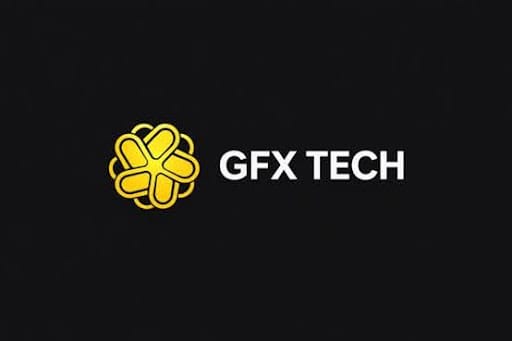Dogecoin Block Rewards and How They Work
Dogecoin, the fun cryptocurrency featuring the Shiba Inu dog meme, has exploded in popularity in recent years. Under the hood, Dogecoin operates on the same blockchain technology as other major cryptocurrencies like Bitcoin. One key aspect of how Dogecoin works is through block rewards. When a new block is mined, the miner who validates the transactions in the block receives a reward of newly created Dogecoins. This helps incentivize miners to secure the network while also expanding the Dogecoin money supply. But how exactly do Dogecoin block rewards work?
What Are Block Rewards?
Block rewards refer to the new cryptocurrency units that are created and awarded to miners for each new block of transactions added to the blockchain. For Dogecoin, when a block is successfully mined, the miner receives a fixed reward of 10,000 DOGE per block. This provides an incentive for miners to run the computing hardware and energy required to process blocks and add them to the Dogecoin blockchain.
The block reward is how new Dogecoin enters circulation. Over time, more blocks are mined, leading to more block rewards being paid out. This expands the total supply of Dogecoin that is available. The rate at which new blocks are mined is determined by the blockchain's protocols that adjust the mining difficulty. For Dogecoin, blocks are mined on average once per minute. At this speed, approximately 5.2 billion new DOGE enters circulation per year through block rewards.
Why Do Block Rewards Exist?
Block rewards serve a couple key purposes for cryptocurrencies like Dogecoin:
- They incentivize miners to validate transactions and secure the network by giving them an income for their work. Without block rewards, there would likely be insufficient mining power to properly operate the blockchain.
- They allow the cryptocurrency supply to expand in a controlled manner. The rules governing block rewards and how they change over time determine the inflation rate for the cryptocurrency's supply. For Dogecoin, the inflation rate steady decreases over time but never reaches zero.
- They provide a way for the cryptocurrency to be distributed. Since all new units of the cryptocurrency originate from block rewards, it provides a fair way to put the coins into circulation as they are mined.
In essence, block rewards are the incentive structure that keeps the blockchain decentralized but secure while also controlling monetary supply expansion in the absence of a central issuing authority. The parameters of the block reward system are core components of a cryptocurrency's design.
How Are Block Rewards Determined?
For new blocks added to the Dogecoin blockchain, the block reward amount is fixed at 10,000 DOGE per block. However, the actual reward received by a miner can be slightly higher than this. That's because in addition to the fixed block reward, miners also collect any transaction fees associated with the transactions they include in their validated block. These fees, which are optional for Dogecoin transactions, provide extra incentive for miners to prioritize certain transactions.
While the 10,000 DOGE block reward is fixed in the short term, the protocol does include rules to gradually taper the block reward amount over time. Here's how the diminishing block reward schedule works for Dogecoin:
- Blocks 0 to 100,000: 10,000 DOGE per block
- Blocks 100,001 to 200,000: 5,000 DOGE per block
- Blocks 200,001 and beyond: 2,500 DOGE per block
This stepwise halving of the block reward occurs periodically to control the overall long-term inflation rate. The number of Dogecoin released annually still increases over time, but at a slower and slower pace. The last block reward halving for Dogecoin took place in early 2015.
Impact on Miners and Mining Profitability
The value of block rewards has a big impact on miners. In the early days of a cryptocurrency, when the value is low, block rewards provide the bulk of income for miners. If the price appreciates over time, block rewards become a smaller percentage of total mining compensation as transaction fees grow to become more significant.
For individual miners, block rewards are highly dependent on mining power and luck in finding a valid block. More mining power relative to the network improves one's chances. After deducting electricity costs, block rewards roughly track with mining power contribution. But there is considerable short-term variability based on the randomness of hashing and block confirmation times.
Overall, the number of active miners and the total mining power dedicated to a network will dynamically adjust based on the economic incentive provided by block rewards. If rewards drop too fast, it can reduce the security of the blockchain. Setting appropriate block reward schedules is therefore an important consideration for cryptocurrencies.
Conclusion: Two Key Points to Remember
To wrap up, here are two key points to keep in mind when it comes to Dogecoin's block reward system:
How often are block rewards paid out?
With a new block being mined roughly every minute, Dogecoin block rewards are paid out approximately 14 million times per year, giving miners predictable periodic income for securing the network.
Will there eventually be no block rewards?
No, Dogecoin's block rewards will continue indefinitely but decrease over time. The gradual reduction in block rewards helps control Dogecoin's inflation rate so the supply does not greatly exceed demand.
Understanding how block rewards work is helpful for anyone interested in cryptocurrency mining or the forces of supply and demand that affect currency values. Dogecoin's reliable block reward system allows it to operate as a stable and viable cryptocurrency. Though the block rewards may diminish over time, mining Dogecoin will continue to incentivize participation in the network for the foreseeable future.




